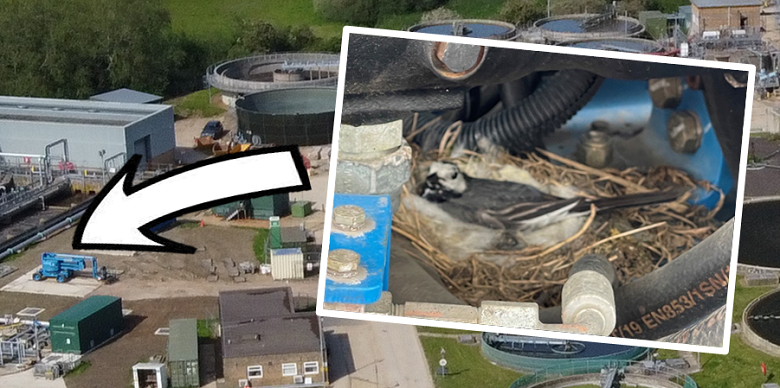Nesting birds protected during £9.3 million sewage upgrade
Tuesday 17th August 2021 09:42

A major sewage upgrade in Bicester continues, despite the efforts of a nesting pied wagtail to put a spanner in the works.
Engineers spotted a nest among the pipes and wires of a cherry picker at the town’s sewage works – and immediately took steps to prevent the parents and their eggs coming to any harm.
The machinery has now been fenced off with signs warning people to keep away – and will be out-of-use until the young birds have hatched and safely flown the nest.
Bicester sewage works, which is undergoing a £9.3 million upgrade to ensure a resilient service for the rapidly-growing town, is well known for its bird sightings, and even has its own ‘twitchers’ club and a bird hide.
To accommodate Bicester’s anticipated population growth of approximately 20,000 people over the next five years, the upgrade will increase the amount of wastewater the site can process and includes a newly constructed fourth ‘aeration lane’ and a fourth ‘final settlement tank’.
Steve Tovey, Thames Water’s Bicester performance manager, said: “The ongoing upgrades are the latest investments to improve our infrastructure so we can continue to deliver life’s essential service.
“These upgrades will enable Bicester sewage works to continue providing outstanding wastewater treatment to the residents of Bicester today, and for many years to come.”
The pied wagtail, easily identifiable by its bouncing tail and black and white markings, is a common sight in towns and villages, darting about picking up insects off the ground or feasting on seeds in autumn and winter.
With 470,000 breeding pairs in the UK, its conservation status is ‘green’, meaning it is neither threatened nor endangered.
Sewage treatment sites like Bicester are popular spots for birds due to the abundance of insects available for them to eat, and the ponds, lagoons and wild areas that are often on site.
Paul Dresou, of contractors MWH Treatment, said: “Pied wagtails are known to nest in strange areas like holes in walls, buildings, old nests of larger birds or even machinery and diggers, so we must be very vigilant and check all machinery before using it, especially at this time of the year.”
